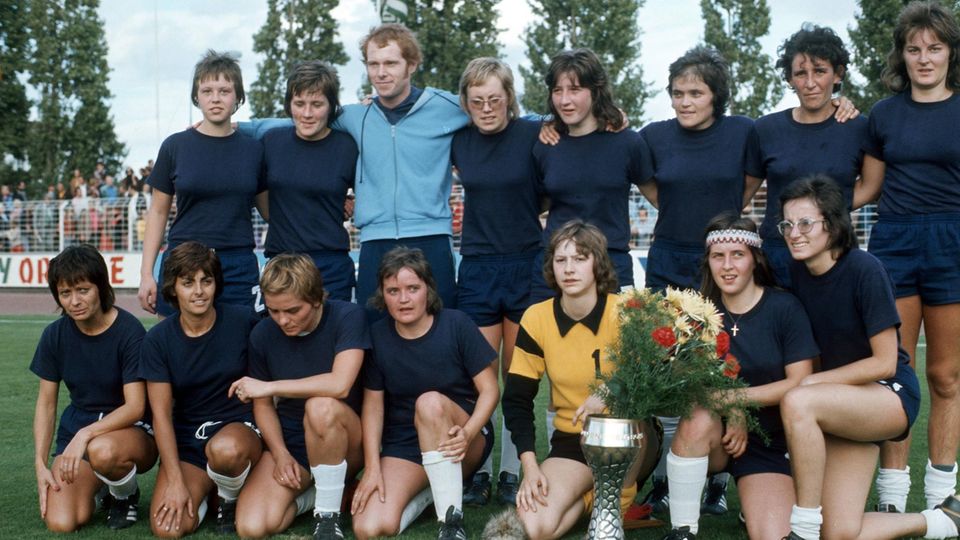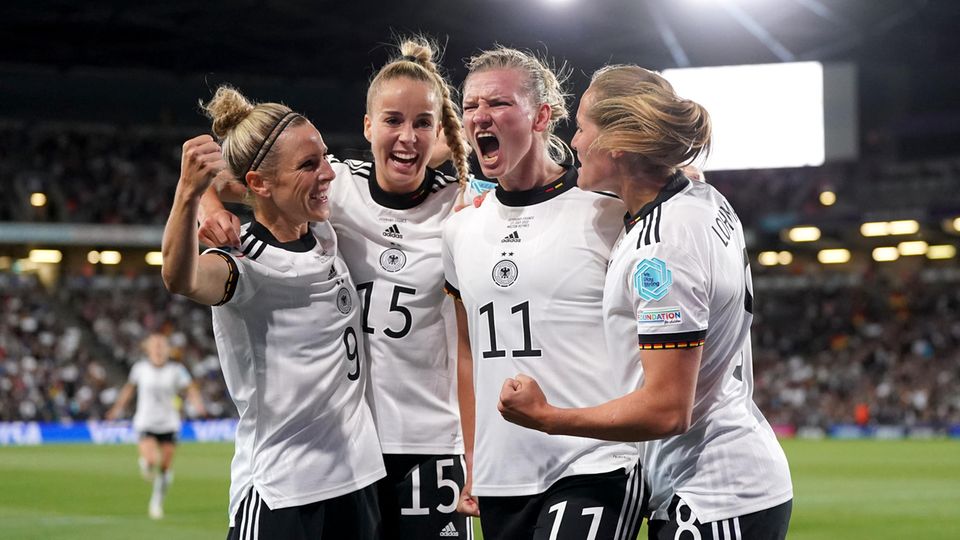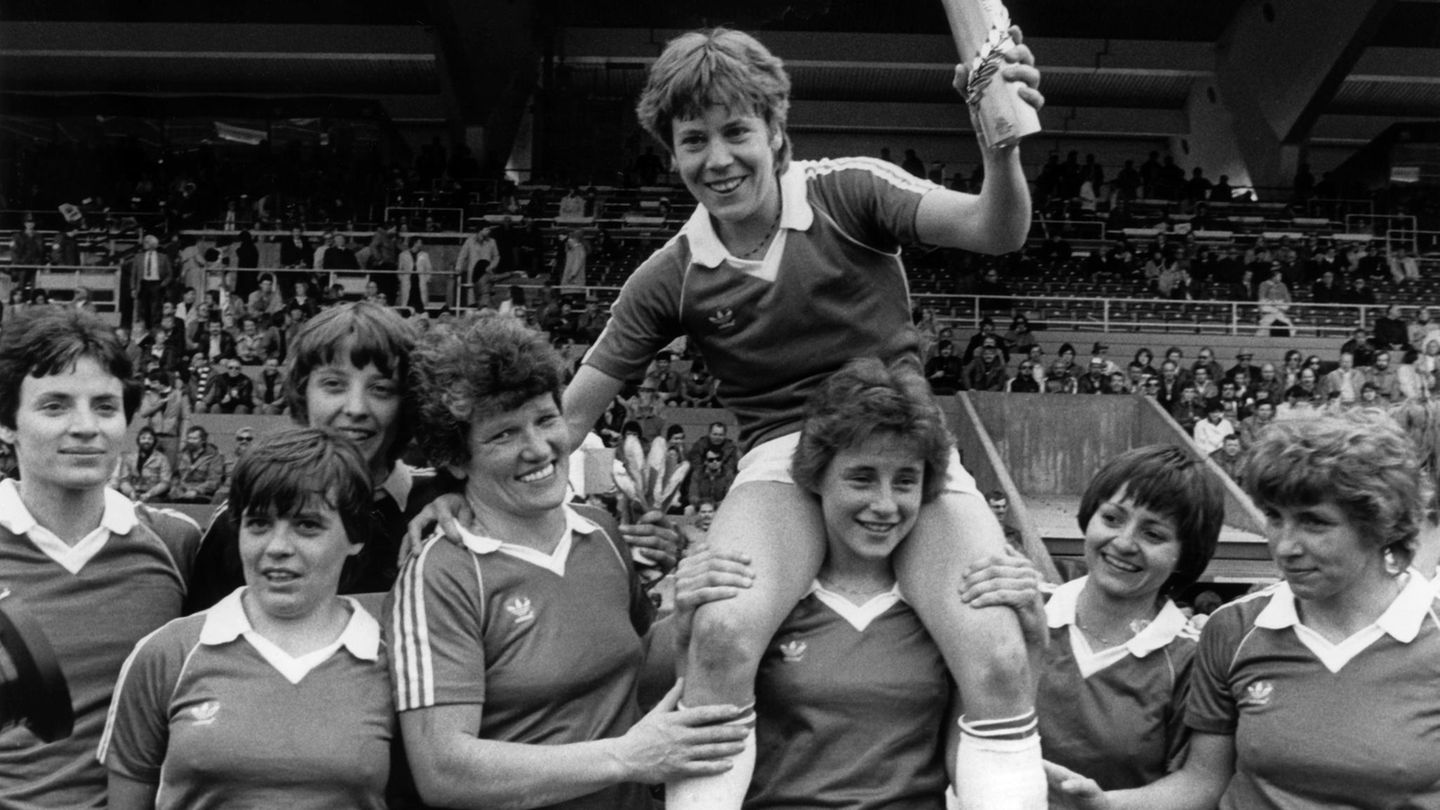The German women’s national soccer team can win their ninth European Championship title against England. Now the DFB women are showing their critics, because the history of German women’s football is marked by bans and ridicule.
Football is purely a male sport? Are you kidding me? Are you serious when you say that! Now it’s the women who create a great football atmosphere in the country. After five wins in five games and most recently a 2-1 victory in the semifinals against France, Germany is finally on the verge of winning a European football championship again. The men’s national team last reached a European Championship final in 2008, losing 1-0 to Spain. The DFB men won their last major title in 2014 at the World Cup in Brazil. After that there was only one Confederations Cup win in 2017.
The footballers have worked hard to earn their reputation. It took decades. Germany’s first women’s soccer club was founded in Frankfurt in 1930. However, there were no opponents and the club broke up just a year later after numerous protests.
Women who play football have long been harassed and smiled at
Women playing soccer were not taken seriously and faced prejudice and harassment. For the men, women’s football was nothing serious. At the beginning of the 1950s, women were smiled at and men watched women’s football for amusement. With the World Cup victory of the German men’s national team in 1954, however, there was increasing euphoria for the sport, which benefited the development of women’s football. Women also started to play soccer in their spare time.
From 1955, however, the German Football Association (DFB) unanimously banned women’s football. Football contradicts female nature, women take physical and mental damage, doctors said. The Dutch psychologist and anthropologist Fred JJ Buytendijk came to the conclusion in his study, which is very questionable from today’s perspective, that women are not suitable for playing football. “Football as a form of play is essentially a demonstration of masculinity. […] It has never been possible to let women play football. […] Kicking is probably specifically male, so whether being kicked is female I leave open. In any case, not kicking is feminine!”, according to the study.
The men just wanted to keep the sport to themselves. There was humiliation and prejudice against women playing soccer. Fifa referee Rudolf Kreitlein said in 1966: “I would suggest leaving football to the men and the women to the stove.” Nevertheless, the women did not let the joy of playing soccer deter them and met privately “in wild teams” in order to practice exactly that sport. At the end of the 1960s there were 1,000 women’s teams, despite the ban on women’s football. They were invited to tournaments abroad, and women’s football increasingly got rolling.
In 1970, Wim Thoelke, TV presenter of the ZDF sports studio, expressed complete disrespect for women playing football. “What are these girls doing this and why are they doing it?” he asked. The TV presenter let out more tones: “Boy, boy, yes, they don’t need to get upset, the viewers – the women wash their jerseys themselves. If the men fell in the mud, that would be bad, because then the women would have to wash at home.”
Female footballer beats men for goal of the month nomination
At the end of 1970, however, the DFB showed itself to be extremely kind and allowed women’s football – albeit with special rules for women footballers: they were only allowed to play in good weather and not in winter, they had to use youth balls and the playing time was two times 30 minutes reduced. At first, wearing cleated shoes was also forbidden, as they were said to be unsuitable for women.

Nonetheless, the ball rolled. Four years later there was the first official German championship for women, from which the winner TuS Wörrstadt emerged with captain Bärbel Wohlleben. And by no means a woman can’t kick a football more than five meters, as men said: Bärbel Wohlleben managed a successful long-range shot from outside the penalty area, which was even voted goal of the month. He prevailed against selected goals from men – including against ex-Schalke Rüdiger Abramczik. Wohlleben’s goal was of great importance for women’s football; it clearly stimulated interest and motivation.

The development of women’s football continued to take its course. In 1979 the DFB Cup for women was introduced. And women’s football also became popular abroad. The Taiwan Football Association invited the world’s strongest women’s football teams to a tournament. But Germany didn’t have a national team yet, so in 1981 SSG 09 Bergisch Gladbach, which at the time was celebrating one success after the other and had won the German championship nine times, traveled there. The German team actually won the tournament in Taiwan.
DFB women win more titles than DFB men

In the following year, the German Football Association was obviously ready to set up a women’s national team. On her debut against Switzerland she scored a 5-1 win. However, eight more years passed before there was such a national team in the GDR.
In 1989, the DFB women proved with their first European Championship victory that football is also a women’s affair. As a result, they were first noticed in public. The corresponding appreciation for winning the title? A coffee service. In 1991 it was a coin set to win, in 1995 6000 German marks. In 2003, the DFB players received a bonus of 15,000 euros for winning the world championship title. At the next World Cup four years later, the German women won again. This means that German women’s football has two world championship titles and eight European championship titles. And the men? Four world champion and only three European champion titles.

With the 2011 World Cup on home soil, German women’s football finally reached a new dimension. Public interest was greater than ever. Up to 19 million people watched the games on television, and the stadiums were sold out. The DFB women were eliminated by Japan in the quarter-finals. At the 2013 European Championships in Sweden, they then won their eighth and, for the time being, last European Championship title.
Today, the DFB has 821,920 female members and 304,849 girls who play football under the umbrella of the German association (as of 2020). Tendency slightly increasing. No wonder given the success story.
German women are facing their ninth victory at the European Football Championship
Now the DFB women, under coach Martina Voss-Tecklenburg, are recording their next success at the European Championships in England. They are in the final and on Sunday night they take on the hosts, who have also had an outstanding tournament so far and are unbeaten in 19 games. Kick-off is at 6 p.m. at Wembley Stadium in London in front of 90,000 spectators. It would be the ninth European Championship title for Germany and the DFB women. Although clichés are still circulating against women’s football, it has long been clear that the DFB women’s team is a successful team. This is one of the reasons why the association’s supervisory board and shareholders’ meeting decided on Thursday that the term “The Team” should no longer be used for the men’s team.

Sources: DFB, , ,
Source: Stern
I have been working in the news industry for over 6 years, first as a reporter and now as an editor. I have covered politics extensively, and my work has appeared in major newspapers and online news outlets around the world. In addition to my writing, I also contribute regularly to 24 Hours World.




